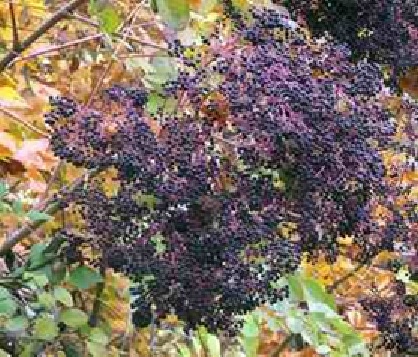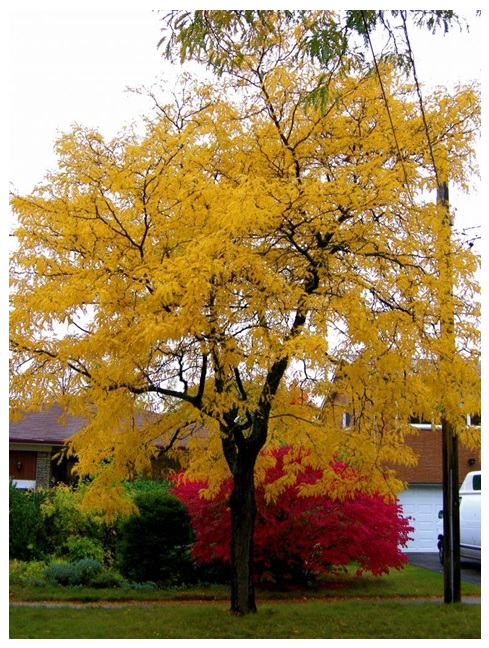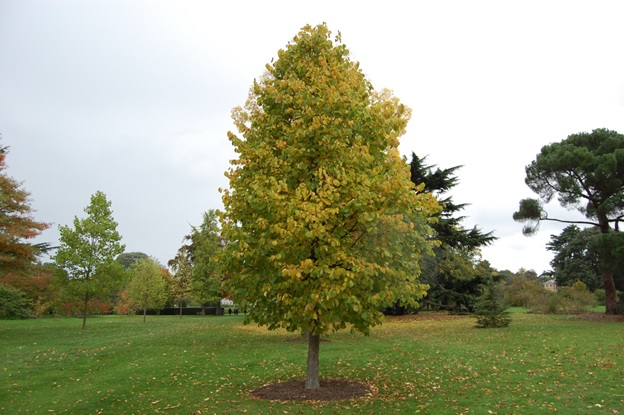Landscaping Mississauga gardens – drought tolerant shrubs – Devil’s Walkingstick
Devil’s Walkingstick (Aralia spinosa), is a large deciduous shrub native to eastern North America, also known as Hercule’s club, or Mississippi hoe handle. The various names refer to its unusual look – the stems of the plant are unbranched and simple, like a walking stick, and they are covered with large prickly thorns that would metaphorically be associated with the devil.
The shrubs generally grow in clusters of unbranched stems, rising to the height of 3.5–6 m which bear upon their summits a crowded cluster of doubly or triply compound leaves, thus giving to each stem a peculiar tropical palm-like appearance.
The shrub is particularly attractive in the autumn when its large green leaves turn to a distinctive shade of bronze red touched with yellow. In late summer the shrub is covered with individually small, but produced in large showy panicles, creamy-white flowers that smell like lemon. The fruit are purplish-black berries ripening in the late fall. An additional advantage of using devil’s walkingstick is the fact that they can easily be propagated from seed, by division, or from root cuttings, so you can only purchase one specimen and propagate for the rest of the garden.
The textural quality of this eastern native’s stems and foliage is superb. During winter, a circle of the thorn-covered stems lend strong winter
interest looking as magical as an outdoor sculpture. Dark blue-green compound leaves offer a tropical effect before turning yellow and purple in autumn. One-foot-wide flower clusters sit atop the foliage in summer and transform into purple-black fruits that attract birds





